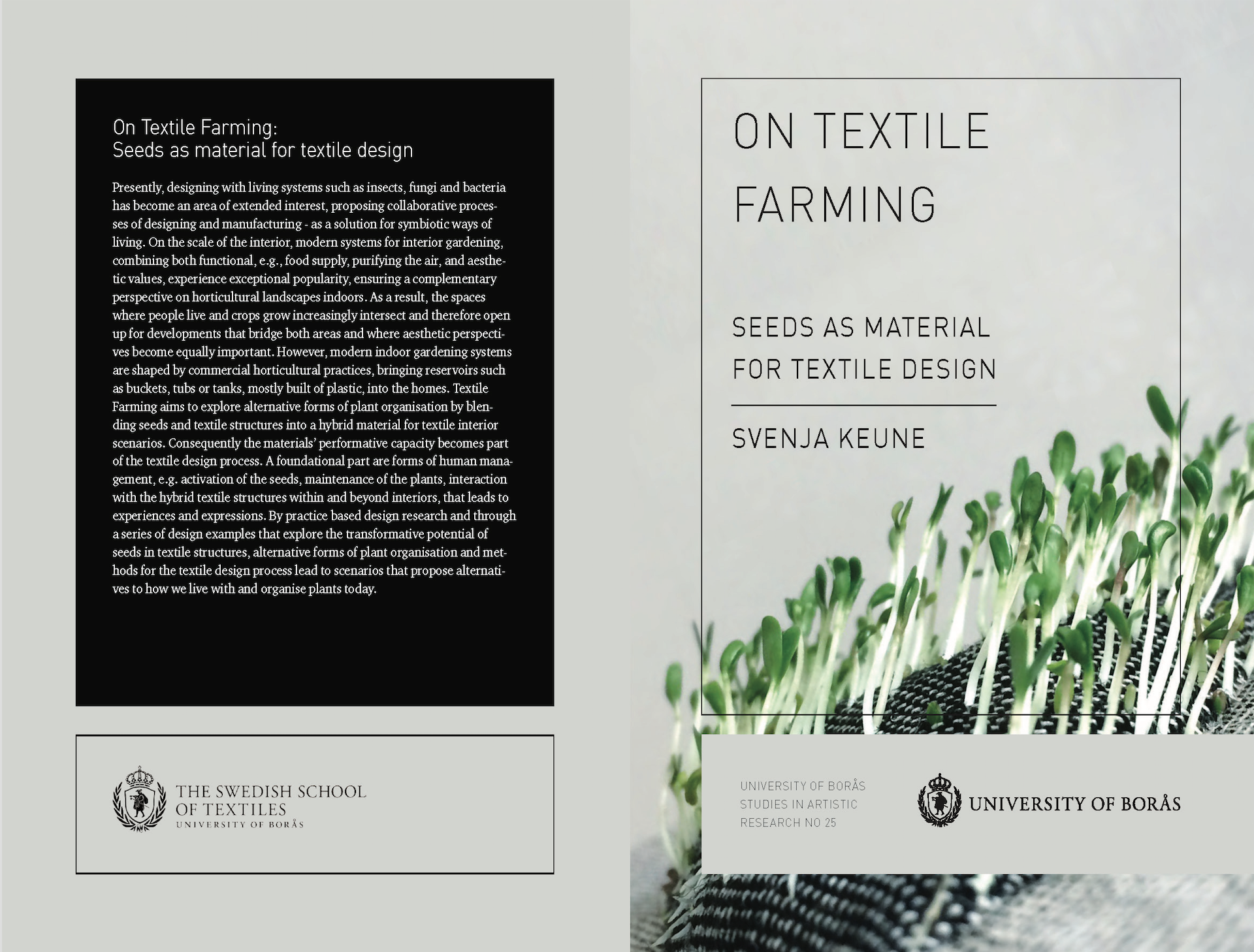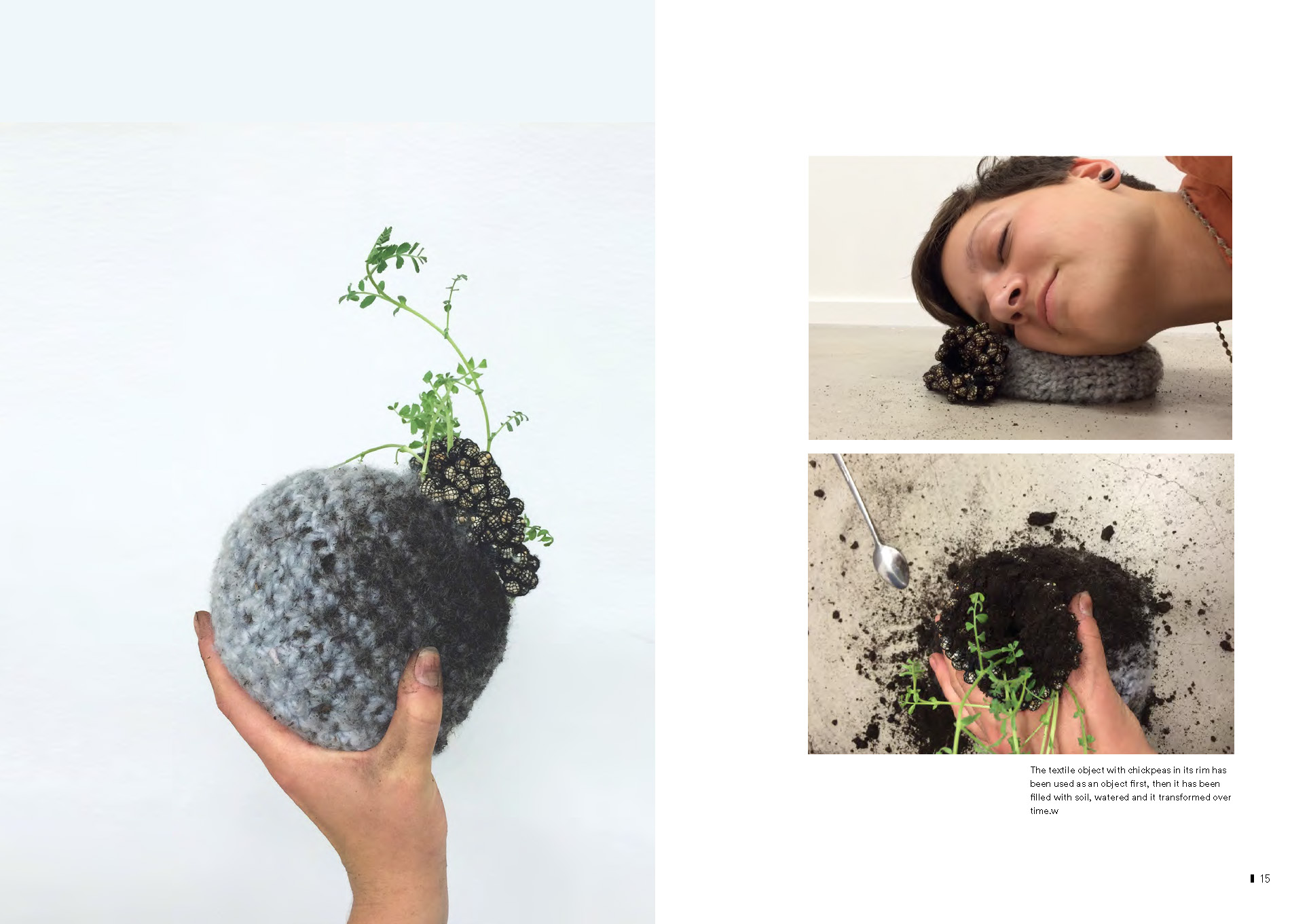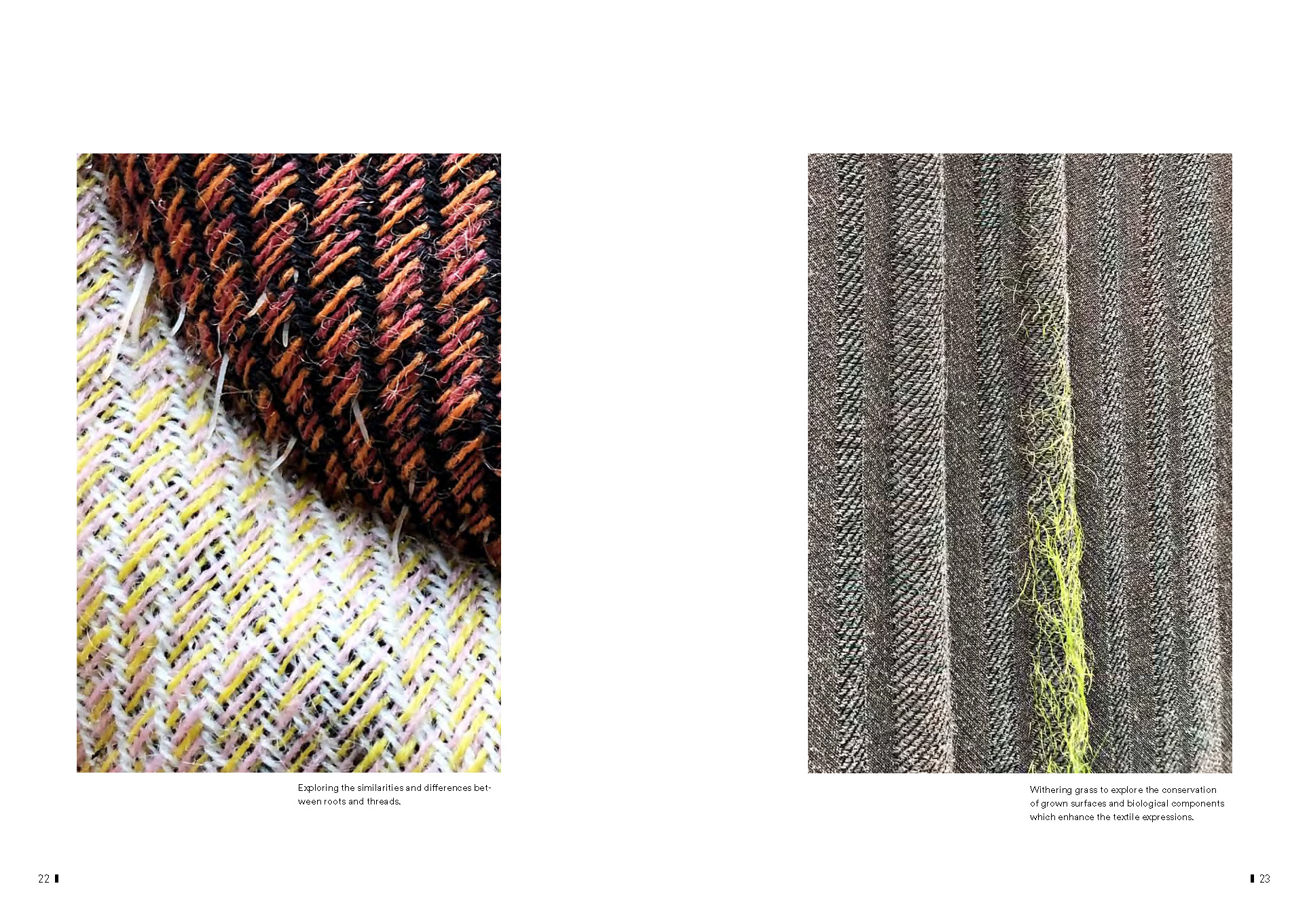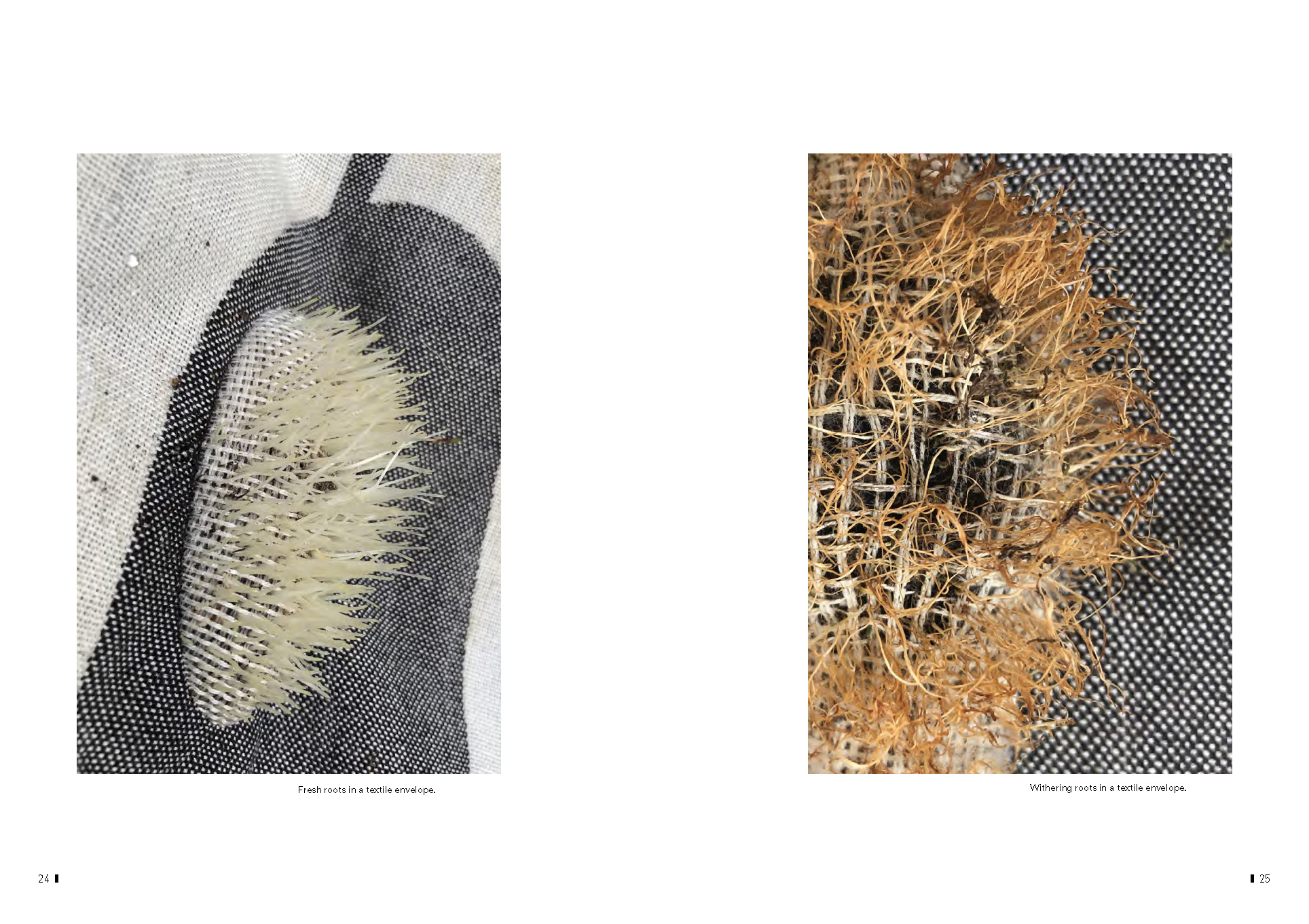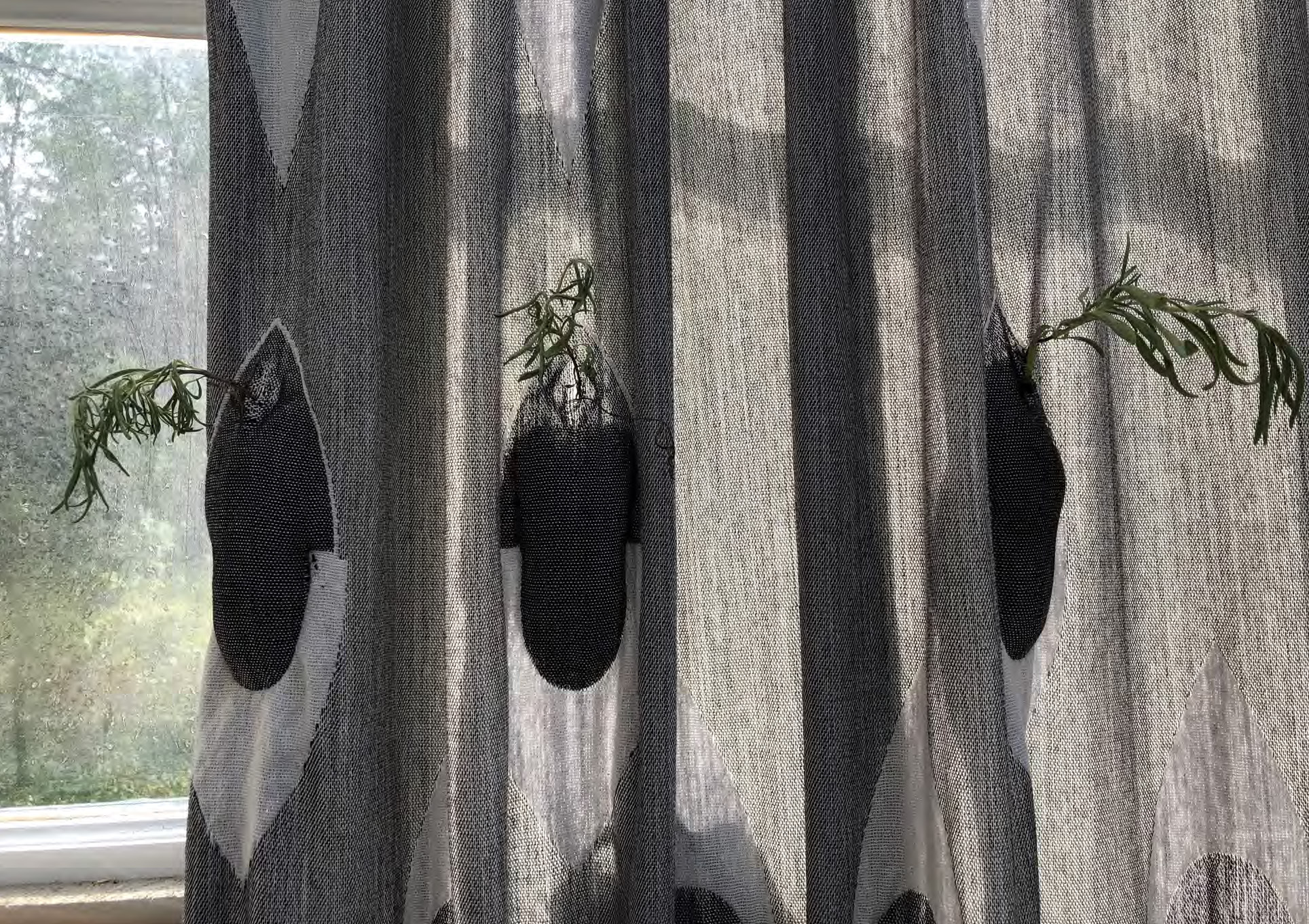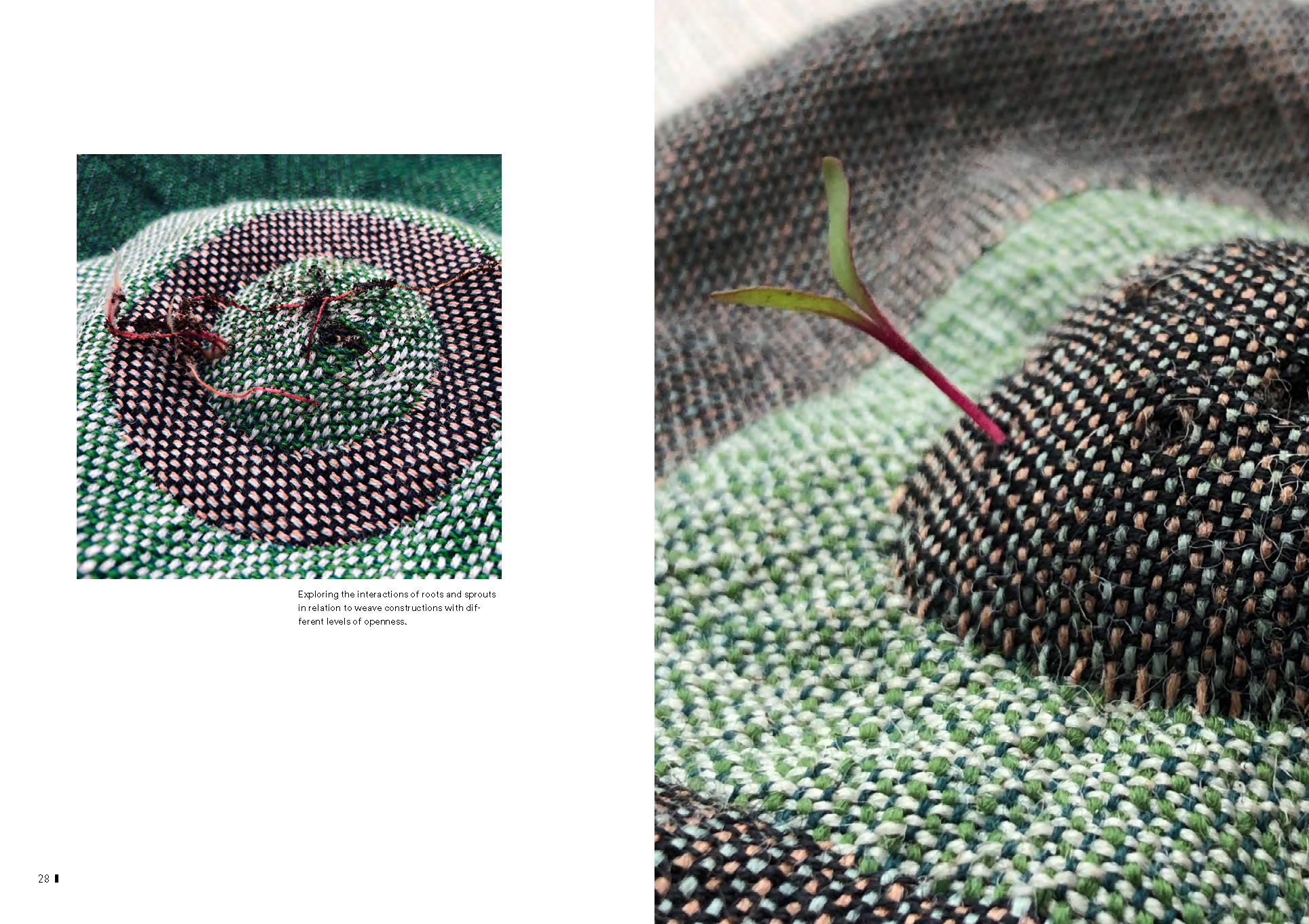2018 Licentiate Thesis
On Textile Farming: Seeds as a Material for Textile Design
As a part of the ArcInTex European Training Network as Early Stage Researcher 7 I was asked to develop textile structures for adaptive and responsive interiors. The ArcInTexETN aimed to strengthen the foundations of design for more sustainable forms of living by connecting architecture, interaction design and textiles. I had quite some experience in combining textiles with different fields and different materials but two questions struck me: How does one design in a time like today and how does one live more sustainable? Since my position included a collaboration with the textile industry I was employed at Ludvig Svensson and enrolled as phd student at the Swedish School of Textiles, so I found myself between two quite different environments. I felt most comfortable between Svenssons two departments the Interior Textiles department and the Climate Screens department. With their highly specialised products Svensson wants to create better climates for both people and plants. Since living and growing crops increasingly intersect through for example forms of urban gardening or indoor gardening it seemed to me that there is a huge potential in joining both departments again and to develop perspectives for joining textiles and plants, horticulture and domestic living. Then textiles could mediate the everyday living with plants since textiles are much more flexible, adaptable, multi functional, and closer to human culture than plastic tubes, shelfs and buckets which are commonly used for plant cultivation in horticulture or indoor hydroponic systems. In order to use textiles to contain plants and to cultivate them, seeds have to be integrated into them and this does not only affect how we have to design textiles but also how to live with them.
You can download the publication via the following link: On Textile Farming: Seeds as a Material for Textile Design



